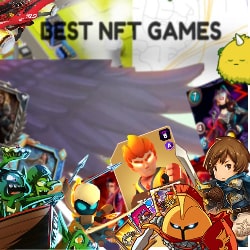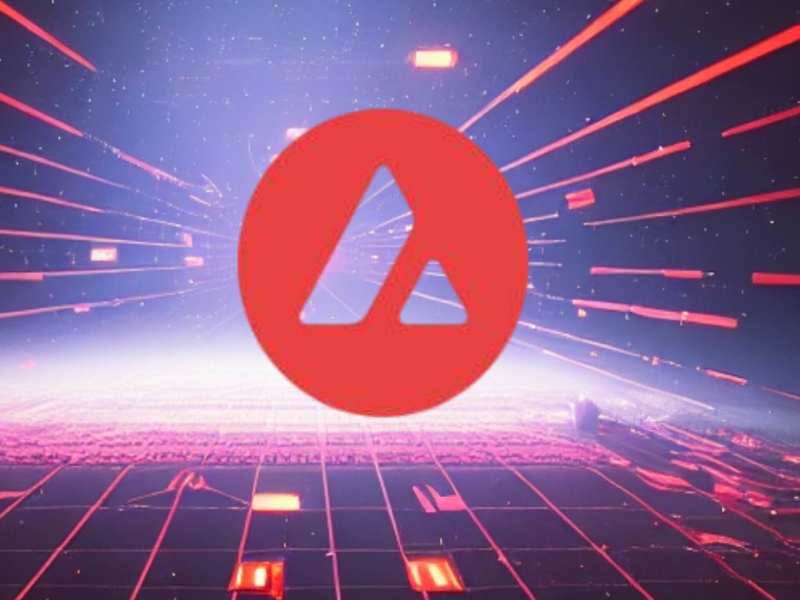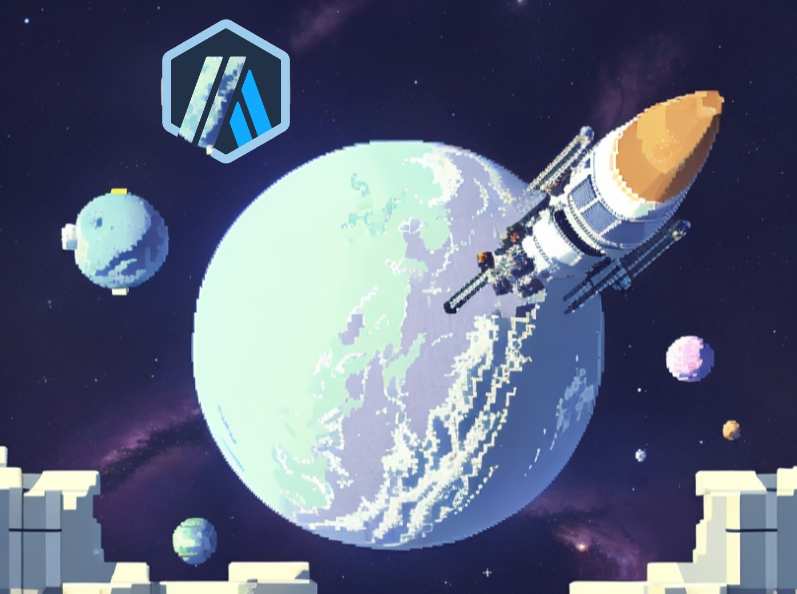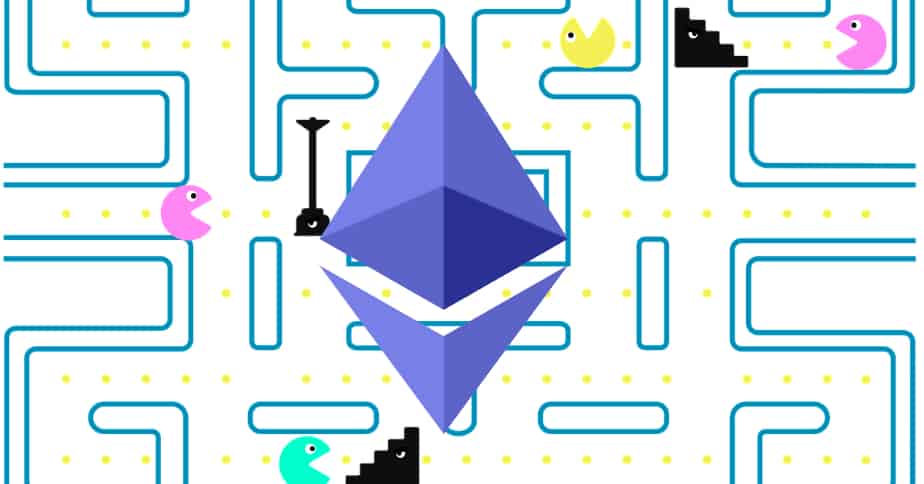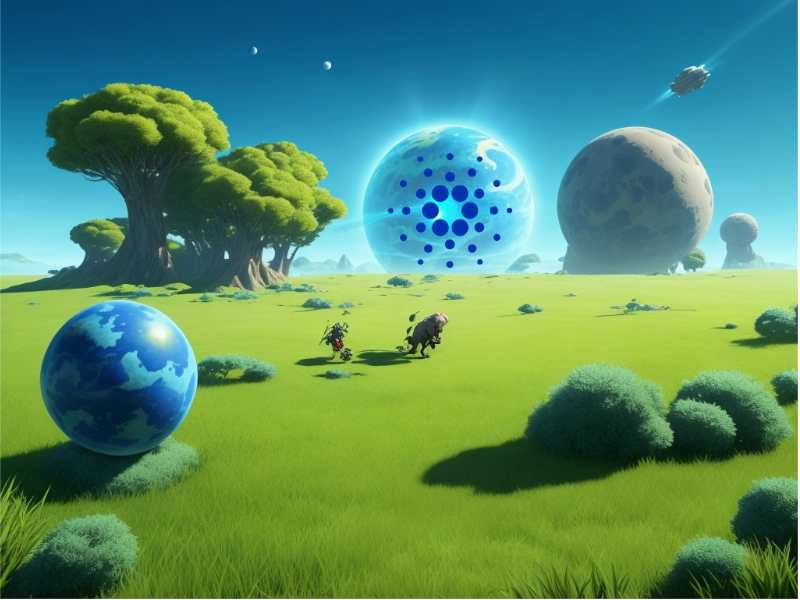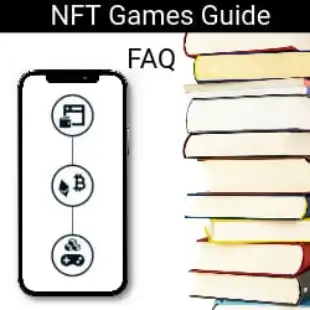When it comes to the “Top 5 Blockchain Games,” Immutable X offers a unique platform that stands out for several reasons. As a Layer 2 scaling solution on the Ethereum blockchain, it’s tailored for high-volume NFT transactions, effectively reducing mainnet congestion. One of its standout features is the complete elimination of gas fees, which significantly enhances the user experience by removing the financial barriers often associated with blockchain transactions. Additionally, its compatibility with the Ethereum ecosystem allows for seamless integration. In this article, we explore the games that are leveraging these advantages to offer compelling experiences to players.
For a complete list of games on this blockchain, visit our full Immutable X Games Database
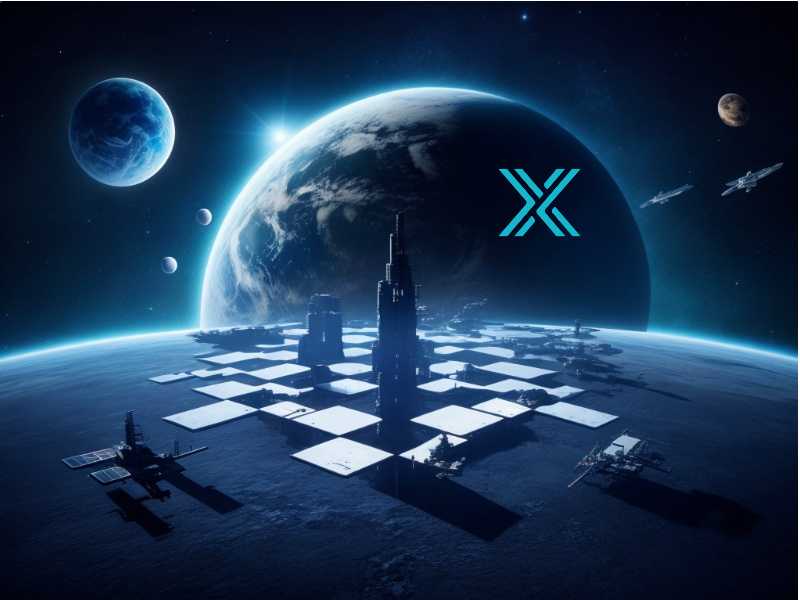
Top Immutable X Games
Some of these games are in early development:
Gods unchained
Gods Unchained is a trading card game. Players build decks and engage in duels, utilizing unique digital cards to outmaneuver their opponents. The gameplay mechanics resemble those of “Hearthstone,” offering a familiar yet distinct experience. Currently in late beta, the game is constantly being fine-tuned to respond to player feedback and evolving gameplay dynamics. With various modes catering to different skill levels, “Gods Unchained” provides a diverse gaming landscape. The game is available on Windows, with Android and iOS versions set to follow later this year.
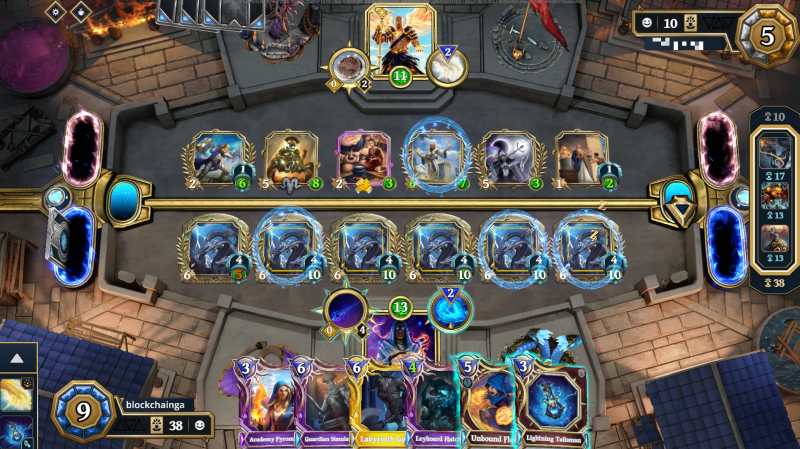
Story
The lore of “Gods Unchained” weaves together the Nine Realms, the Gods, and the mortal plane of Eucos. Through the “Trial of the Gods. Trial of the Gods” introduces a grand tournament in the Grand Arena, where six earthly champions represent their divine patrons. Champions like Lysander of Light, Neferu of Death, and Orfeo of Deception each have unique origin stories reflecting themes of courage, resurrection, and trickery. In the first part, the competition’s true purpose remains mysterious, hinting at deeper tensions and relationships between the Gods.
The six Gods of Eucos gather at the Citadel, learning of an impending calamity and agreeing to a contest to strengthen themselves by choosing six mortal Champions. However, the contest is revealed to be a deceptive attempt by Thaeriel the God of Light to become the one true God, leading to chaos and a permanent eclipse in Eucos. After a fierce battle, the false God is defeated. Now mortal and forsaken, Thaeriel is left vanquished and smoldering on Eucos planning his vengeance.
Gameplay
Gods Unchained is a 1v1 digital trading card game where players aim to reduce their opponent’s life points to zero. Players build a 30-card deck aligned with one of six Gods, each representing different domains and abilities, and use Mana to play cards. The gameplay emphasizes strategy, deck building, and turn-based combat.
Alongside traditional modes like Ranked and Solo, the game has introduced Chaos Constructed, where all domain restrictions are lifted, and Pauper Mode, focusing on common and rare cards. An additional feature is the Favor/Sanctum system, where Favor is a resource gained by in-game activities and can be used via the Sanctum to access different “side-decks.” While not central to the game, this system adds an extra layer of strategy and decision-making.
NFTs
In Gods Unchained, NFTs take the form of cards, each representing creatures, spells, or relics within the game’s universe. They are grouped into various sets, with rarity levels ranging from Common to Mythic, and align with specific domains and tribes. Additionally, Gods Unchained offers special collector’s items, also represented as NFTs, that add another layer of engagement and can be earned, and sold on the marketplace
Different card qualities exist, with Plain cards being non-NFT and higher qualities, such as Meteorite, classified as NFTs. Plain cards can be transformed into Meteorite NFT cards using the forge.
The game also introduces a unique feature called Shine Fusing, allowing players to combine lower Shine cards to create higher quality cards, up to Diamond quality. This process is part of the Forge, where players can also transform Plain cards into Meteorite NFTs.
Shine Fusing adds a burn mechanism to Gods Unchained, increasing the supply of higher Shine cards while decreasing the supply of lower Shine cards. This results in a reduction of the circulating supply of cards and adds further utility to the $GODS token which is also burned in the process.

Token and Economy
The $GODS token, as the native ERC-20 token in Gods Unchained, plays a vital role in shaping the game’s economy. With a capped supply of 500,000,000 tokens, it functions to amplify digital asset control, expand the economic framework of the game, and cultivate active participation within the community.
Utility and Functionality
$GODS is a multifaceted asset, offering various utilities within the game:
- Crafting and Purchasing: Players can use $GODS to craft NFTs and purchase packs from the marketplace.
- Staking: By holding tokens in Immutable X, players can earn more rewards.
- Governance: The tokens represent voting power, allowing players to influence the game’s destiny.
- Shine Fusing: A unique feature that enables players to combine lower Shine cards to create higher rarity cards, up to Diamond quality.
The value of $GODS reached its all-time high in December 2021. Since that time, the price has seen a substantial decline from that peak value.
Earning Opportunities
Gods Unchained offers several ways to earn $GODS:
- Daily Play and Earn: Players can earn tokens through ranked games, with win rates converted to fragments, then to $GODS.
- Weekend Ranked Events: These events provide opportunities to win card packs and $GODS.
- Trading NFT Cards: Selling NFT cards on the market can net a decent amount of $GODS.
The immortal Game
Immortal Game, a chess adaptation built on the Ethereum blockchain, leverages Immutable-X for scaling. It incorporates traditional chess elements with unique features known as Immortals. These chess pieces have aesthetic styles and purity factors that influence their points and resale value. The game also offers an option for free play, allowing a broader audience to participate. Currently in its open release stage, Immortal Game can be accessed on platforms such as Windows and Android.
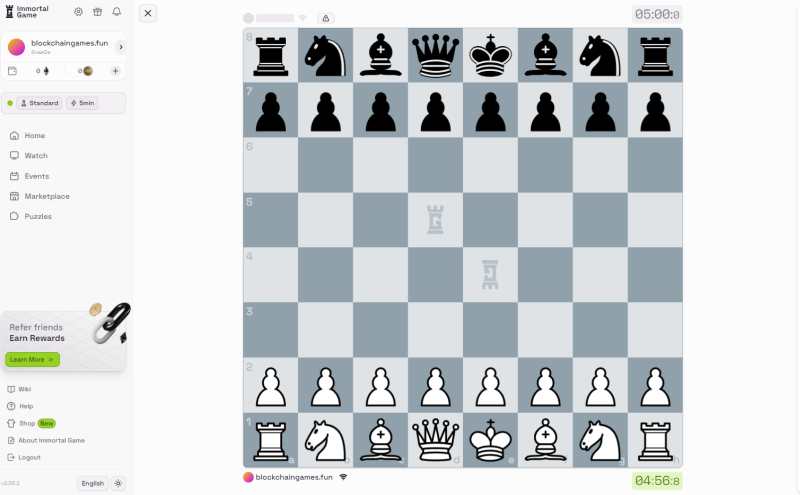
Story
Immortal Game builds upon the traditional chess framework, a game with a rich history spanning 1500 years. Chess has evolved through numerous iterations across the globe, finally settling into the universally recognized form we know today.
Gameplay
Playing the Game: Immortal Game combines traditional chess with blockchain, using NFT chess pieces called Immortals. Players also have access to free, non-transferrable Ageless pieces, each with a specific side quest. Upon registration, players receive their first Ageless piece and can earn more by winning games. With options for different time modes like blitz and daily quests, the game offers a versatile experience.
Quests in Immortal Game are an integral part of the gameplay, divided into Micro and Macro Quests. Micro Quests are daily challenges, such as winning a game with a specific piece, while Macro Quests are long-term goals that offer substantial rewards. For example, a Macro Quest might involve winning a certain number of games within a week. Completing these quests earns players Immortal Points (IP), contributing to their progress on the leaderboards.
Immortal Game hosts various tournaments, including Standard, Immortal, Ageless, and Brawl Tournaments, each catering to different playing styles and preferences. Brawl Tournaments, for instance, are free arenas held three times a week, fostering a friendly competitive environment. Alongside tournaments, the game features three types of leaderboards: Ageless, Immortal, and Standard, where players can climb the ranks by earning IP and reflecting their performance and achievements.
NFTS
In the Immortal Game, Non-Fungible Tokens are represented as special chess pieces known as Immortals. The Immortals correspond to traditional chess pieces: Pawn, Knight, Bishop, Rook, Queen, and King.
These Immortals are categorized into various aesthetic styles, referred to as Elements, including marble, ebony, ivory, and steel. Each Immortal has a purity factor, ranging from rough to masterpiece, which influences their points and resale value on the dedicated marketplace.
Players can acquire Immortals through purchases, quests, and rewards, and they can be traded or sold on the marketplace. The game also offers free Ageless pieces, allowing players to engage without purchasing NFTs. The integration of NFTs in Immortal Game adds a new dimension to the classic game of chess, providing opportunities for collection, trading, and enhanced gameplay.

Economy and Tokenomics
Immortal Game’s economy operates with the CMT (Chess Master Token), an ERC-20 token on the Ethereum blockchain, utilizing Immutable-X for scaling. The CMT token functions as the in-game currency, used for purchasing Immortals, entering tournaments, and other in-game activities.
Players can earn CMT tokens through various means:
- Playing Games: Winning matches and completing specific side quests.
- Completing Quests: Daily quests, such as winning games in specific time modes.
- Winning Tournaments: Placing in top ranks in different tournaments, with rewards like CMT tokens and exclusive Immortals.
- Leaderboard Rewards: Earning rewards based on leaderboard rankings, with specific rewards for top-performing players.
- Trading: Selling rare Immortals on the marketplace for CMT tokens.
The game’s economy is structured to reward active participation and skill, with opportunities to earn through gameplay and strategic trading. While the game can be played for free using Ageless pieces, the use of CMT tokens and Immortals can enhance the player’s experience and success within the game.
Illuvium
Illuvium is an open-world role-playing game (RPG) built on the Ethereum blockchain, leveraging Immutable-X for scaling. The game offers various modes, including Illuvium: Beyond, a competitive collectible card game; Illuvium Zero, a companion game for managing a digital industrial complex; and Illuvium Arena, an auto-battler mode. These modes combine traditional RPG elements with blockchain technology, providing a fusion of gameplay experiences. Currently, in its beta stage, Illuvium is accessible on Windows, mac and android platforms.
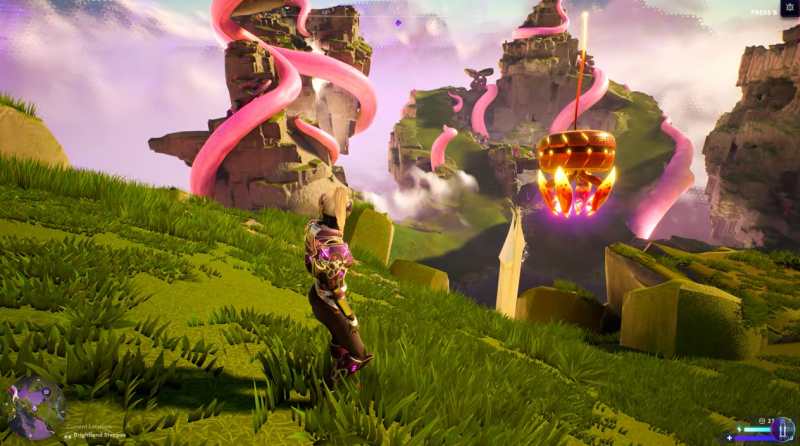
Story
In Illuvium, players assume the role of an interstellar traveler who answers a distress call, only to become marooned on a desolate and enigmatic planet. This planet, characterized by its crystal-covered ocean and extreme weather, may hold the key to the origin of the player’s race.
The adventure begins with the discovery of powerful and mystical creatures called Illuvials. Players are drawn into a quest to capture these beings using Shards, special crystals mined from the planet. As they navigate through the world, players unlock Obelisks, gateways to unexplored regions, and gradually piece together the puzzle of Illuvium by rebuilding their stranded vessel, the Leviathan.
Gameplay
Illuvium offers a diverse gaming experience with multiple modes that allow players to explore, battle, and gather resources. The game is set in a 3D world and connects various aspects of gameplay through different modes, each offering unique challenges and rewards.
Overworld: In this exploration-focused mode, players traverse a 3D world, capturing creatures called Illuvials and uncovering the planet’s mysteries. Energy management, shard usage for capturing, and customization of characters and drones add layers of strategy.
Battle Arena: This mode features 3D auto battles using Illuvials. Players can engage in competitive Ranked Arena, wager on fights in Leviathan Arena, or enjoy casual gameplay in Survival Arena, each with distinct rules and objectives.
Illuvium Zero: A mobile resource-gathering game, Illuvium Zero allows players to farm resources from owned land plots. These resources can be utilized in other game modes or sold on the IlluviDEX marketplace, making it a central part of the Illuvium ecosystem.
Illuvium: Beyond is a competitive collectible card game where players earn album points by adding Illuvitars with varying power ratings to their collection and completing milestones. These points determine the players’ ranks, positions on the leaderboard, fostering a competitive environment among collectors.

NFTS
Illuvium’s world is inhabited by over 205 unique Illuvials, creatures that can be captured as NFTs. They align with elemental affinities like Water, Fire, Earth, Air, and Nature, influencing their powers and battle outcomes. Illuvials are classified into five distinct classes, shaping the battles. Players can fuse multiple Illuvials to create more potent beasts with unique attributes, adding complexity to the game’s strategy.
Configurable and upgradable Companion Drones assist players in various ways. Players can also equip weapons and armor, enhancing combat capabilities and allowing strategic synergy with their team. Illuvium land plots are NFTs yielding tokens and resources, with different tiers representing larger yields. Illuvitars, player’s avatars, offer customization possibilities, allowing unique combinations of portraits and accessories. Shards are essential for capturing Illuvials, with different rarity tiers. Imbues provide cosmetic changes to items, differentiating player appearances.

Tokenomics and Economy
ILV is the token associated with Illuvium, functioning as an ERC20 token on the Ethereum blockchain. As a governance tool, ILV holders can influence the future of Illuvium through community collaboration on game improvement proposals.
Through liquidity mining, staking ILV returns yield in the form of ILV and allows holders to receive a share of vault distributions. Additionally, vault distributions enable ILV stakers to earn additional ILV, funded through in-game purchases and revenue from the game and sales shared between ILV stakers.
The game economy of Illuvium is a complex ecosystem balancing supply and demand. Supply games, such as Illuvium Zero and Illuvium Overworld, contribute to fuel generation and items within the game. Demand games, such as Illuvium Arena and Illuvium Beyond, primarily consume the fuel and items generated in the supply games. This balance ensures that resources maintain value and remain relevant to the gameplay experience. The value of Illuvium (ILV) reached its all-time high in late 2021. Since then, the price has experienced a significant decline from that peak value.
Ways Players Can Earn ILV:
- Battling: Players can line up a strategic Illuvial team and enter battle arenas or tournaments. Victories are rewarded with ILV tokens.
- Wagering: Instead of fighting, players can wager on the outcomes of bouts using ILV tokens. Correct predictions are rewarded with ILV.
- Hunting and Trading Illuvials: Hunting for Illuvials and selling them on IlluviDEX can be a profitable method in Illuvium.
- Land and Resource Management: In Illuvium Zero, players can put their land to work and earn resources, which can be sold for profit.
- Staking: Players can purchase and stake the game’s native token on the Illuvium platform and claim staking rewards in ILV or sILV.
Guild Of Guardians
Guild of Guardians is an upcoming mobile Roguelite Squad RPG developed by Stepico Games, set to run on Immutable-X. Designed for both iOS and Android platforms, the game will allow players to form guilds, engage in battles, and craft items within a strategic environment. The gameplay emphasizes teamwork and offers various heroes with distinct abilities and roles. The game is planned to be released in 2024.

Story
In Guild of Guardians, the story unfolds in the harsh realm of Brimstone, a land consumed by ash and fire. The Draek, an ancient race capable of breathing fire, have built a civilization in this unforgiving environment. However, their kingdom faces a dire threat from the Scorched, corrupted creatures that have wreaked havoc and pushed the Draek civilization to the brink.
Gameplay
In Guild of Guardians, the gameplay has evolved to focus on strategic, squad-based RPG elements with roguelike features. Players form teams of Guardians, each with unique attributes like faction, class, and elemental traits, to explore dungeons. As an auto-battler, the game places a strong emphasis on the strategic composition of these teams, incorporating traditional RPG roles such as tank, healer, DPS, and support.
The core gameplay loop involves venturing into dungeons that offer a variety of challenges, including unique monsters, bosses, and traps. Players must skillfully navigate these elements to complete quests and secure rewards. These rewards, consisting of resources, currency, and equipment, can be invested in recruiting new Guardians, upgrading existing ones, and crafting specialized gear.
NFTS
In Guild of Guardians, heroes, pets, energy boosters, equipment, and even guilds are tokenized as NFTs. These assets vary in function and rarity, affecting gameplay in different ways. For example, heroes can be upgraded to improve their abilities, while pets and energy boosters provide various bonuses like increased loot or faster energy recovery.
Guilds play a unique role as they are the only means to create NFT items within the game. Being part of a guild offers additional quests and potential rewards, contributing to the game’s economy.
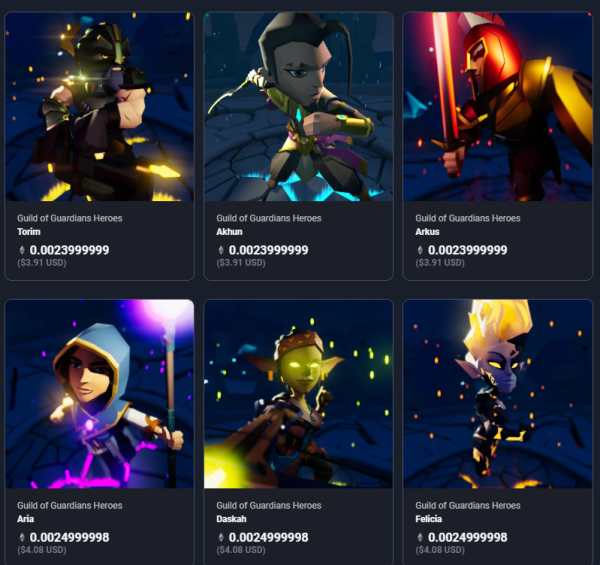
Economy and tokenomics
In Guild of Guardians, the primary in-game currency is Gems (GOG), which serve multiple functions within the game’s ecosystem. GOG can be used for purchasing heroes, pets, and energy boosters, as well as for crafting equipment. They also have utility in speeding up various in-game processes. The game offers multiple ways to earn GOG, including through gameplay, quests, and guild activities.
Staking is another significant aspect of the game’s economy. The Guild’s Treasure is a feature that allows players to stake their NFT assets to earn rewards. There are different staking seasons, each with its own set of rules and rewards. For instance, Active Staking Season Two focuses on rewarding players who actively participate in the game, while NFT Staking Season Two offers rewards based on the rarity and type of NFT staked.
Guilds are central to the game’s economy, as they are the only entities that can create NFT items. Being part of a guild provides additional quests and potential rewards, further enriching the game’s economic landscape. These various economic mechanisms work in tandem to create a balanced and engaging environment, offering multiple avenues for players to earn both in-game and real-world value.
Ember Sword
Ember Sword is a cross-platform fantasy MMORPG developed by Brightstar Studios. The game features a player-driven economy, classless combat, and a mix of PvE and PvP elements in a persistent open world. Operating on the Immutable X blockchain, the game has alpha playtest windows and hasn’t been released yet. Initially, Ember Sword will be available on PC browsers, with a mobile version planned for future development.
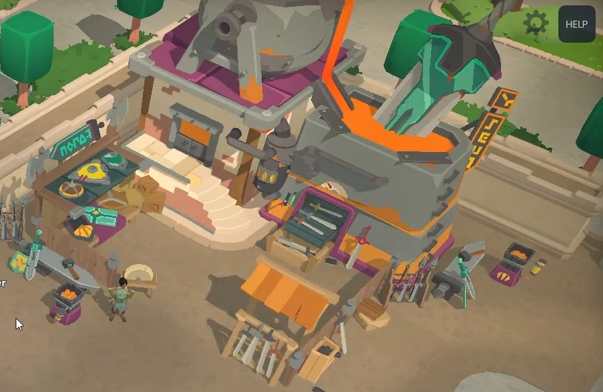
Story
The world of Ember Sword is set on Thanabus, a moon of Jupiter that was once a part of the interplanetary government of Pangaea. The moon was devastated by a cataclysmic event triggered by a godlike entity. In the aftermath, survivors formed a provisional government called the Republic, which still governs the northern hemisphere. The world is divided into four distinct regions: Duskeron, a land of scavengers and traders; Ediseau, a once-humid forest now turned into a snowy border; Sevrend, a land of venomous wildlife and contrasting landscapes; and Solarwood, a serene forested area. Each region has its own unique challenges and ecosystems, making for a rich and diverse world ripe for exploration and conquest.
Gameplay
Ember Sword is an action role-playing game (ARPG) set in a sci-fi fantasy universe, with gameplay that resembles Albion Online. The game offers both PvE and PvP elements in a persistent open world. Its combat system allows for a variety of weapon types, each with unique abilities, contributing to different playstyles. The game features a classless combat system, where players can mix and match abilities unlocked through diverse weapons. With only six abilities assignable at any given time, strategy plays a significant role in gameplay.
The combat experience in Ember Sword draws inspiration from MOBA games like DotA 2 and League of Legends, as well as hack-and-slash games such as Hades. Ground indicators during both PvE and PvP encounters signal impending damage, allowing players time to dodge. As players level up their professions, they unlock new combat abilities, providing a clear progression path. In PvE, challenges can be faced solo or in a party of up to four, with abilities that can be chained together for increased effectiveness.
Resource gathering and crafting are part of the game mechanics, supporting a player-driven economy. Weapon choices not only offer unique abilities but also influence team dynamics, requiring strategic selection for effective team synergy. The game provides PvP zones for competitive gameplay and PvE quests for those interested in cooperative activities. Death penalties vary depending on the area, with minimal loss in non-PvP zones but potential loot loss in PvP areas. Ember Sword aims to cater to a wide range of player preferences, from casual to competitive. These gameplay elements are currently available for exploration during the game’s alpha playtest windows.
NFTs
In Ember Sword, LAND represents unique, non-fungible ERC721 assets on the Ethereum blockchain’s ImmutableX layer. These plots can be acquired through official sales or traded on secondary marketplaces. Once acquired, landowners have the ability to construct various types of buildings, such as crafting stations and guild houses. The type of land owned, ranging from “Regular Plots” to “Cities,” dictates the available construction options and potential rewards. This system allows for a player-influenced gameplay experience within the owned areas.
In-game items such as skins, cosmetics, emotes, weapons, shields, and armor are categorized as collectibles. These items are designed to be purely cosmetic and do not confer any gameplay advantages. Collectibles have a limited supply and are distributed through a variety of in-game activities including PvE and PvP objectives, tournaments, and special events. Once the supply runs out, these items can only be obtained through trading with other players.
The game’s approach attempts to eliminate any pay-to-win elements by keeping normal items like weapons and armor off-chain. Players can also fuse collectibles of the same rarity to create an upgraded item, which requires a certain amount of the in-game currency, EMBER. This feature aims to regulate the in-game economy and maintain the value of collectibles.

Economy and tokenomics
In Ember Sword, the economy is structured around a Dynamic Token Release Model, which adjusts the circulation of EMBER tokens based on player activity metrics like Daily and Monthly Active Users. This aims to align the token supply with the game’s actual demand.
The game also employs a Programmatic Deflationary/Inflationary Policy, featuring a Burn and Mint Equilibrium mechanism. This is designed to manage a total token supply of 2.5 billion. The policy includes mechanisms for burning and minting tokens, with the burn rate varying annually between -5% and 5%. New tokens may be minted at a rate not expected to exceed 5% annually.
Landowners receive a 3.5% distribution from financial transactions occurring on their lands. Additionally, a Cosmetic Merging system exists, allowing players to combine lower-tier cosmetics into higher-tier ones. This process requires EMBER tokens and serves to manage the cosmetic supply within the game.
Conclusion
In the rapidly evolving landscape of blockchain gaming, Immutable X stands out as a pivotal platform that addresses some of the most pressing issues like scalability and transaction costs. The “Top 5 Blockchain Games” on Immutable X not only showcase the platform’s capabilities but also represent the future of gaming, where player ownership and seamless transactions are key. As the technology matures, these games are likely to set new benchmarks in the industry, making it an exciting time to be a part of this digital revolution.
FAQ
What Are P2E games or blockchain games?
P2E, or “Play-to-Earn,” games are a type of blockchain games where players can earn real-world value through in-game activities. These games often use blockchain technology to provide true ownership of in-game assets, which can be sold or traded across game ecosystems and players.
What is Immutable X and Why is it Used in Gaming?
Immutable X is a Layer 2 scaling solution on the Ethereum blockchain, specifically designed for handling NFT (Non-Fungible Token) transactions. It’s used in gaming to enable fast and gas-free transactions, true ownership of in-game assets, and the ability to trade these assets without leaving the game environment.
Are Immutable X games free to play?
While it varies from game to game, many games on Immutable X adopt a “Free-to-Play” model with optional in-game purchases. The absence of gas fees makes it more accessible for players to engage in transactions within these games.
How is Immutable X different from other Layer 2 solutions?
Unlike other Layer 2 solutions that focus on general scalability, Immutable X is tailored specifically for NFT transactions. It also offers a seamless user experience by removing the cost barrier for transactions.
Is Immutable X compatible with Ethereum?
Yes, being Ethereum-native, Immutable X allows for seamless integration with the Ethereum ecosystem.
Are there any transaction fees on Immutable X?
No, one of the key features of Immutable X is the elimination of gas fees, making it cost-effective for users to perform transactions.
Can I earn rewards in these games?
Yes, one of the key features of P2E games on Immutable X is the ability to earn in-game assets that have real-world value. These assets can be traded or sold within the game’s ecosystem or on various marketplaces, providing players with tangible rewards for their in-game achievements.
Where can I find more blockchain games?
If you’re interested in exploring more blockchain games, we’ve got you covered. Check out our extensive Blockchain Games List on our website. We provide a comprehensive list of blockchain games across various networks, including Arbitrum, Polygon, Ethereum, Binance Smart Chain, and more.

